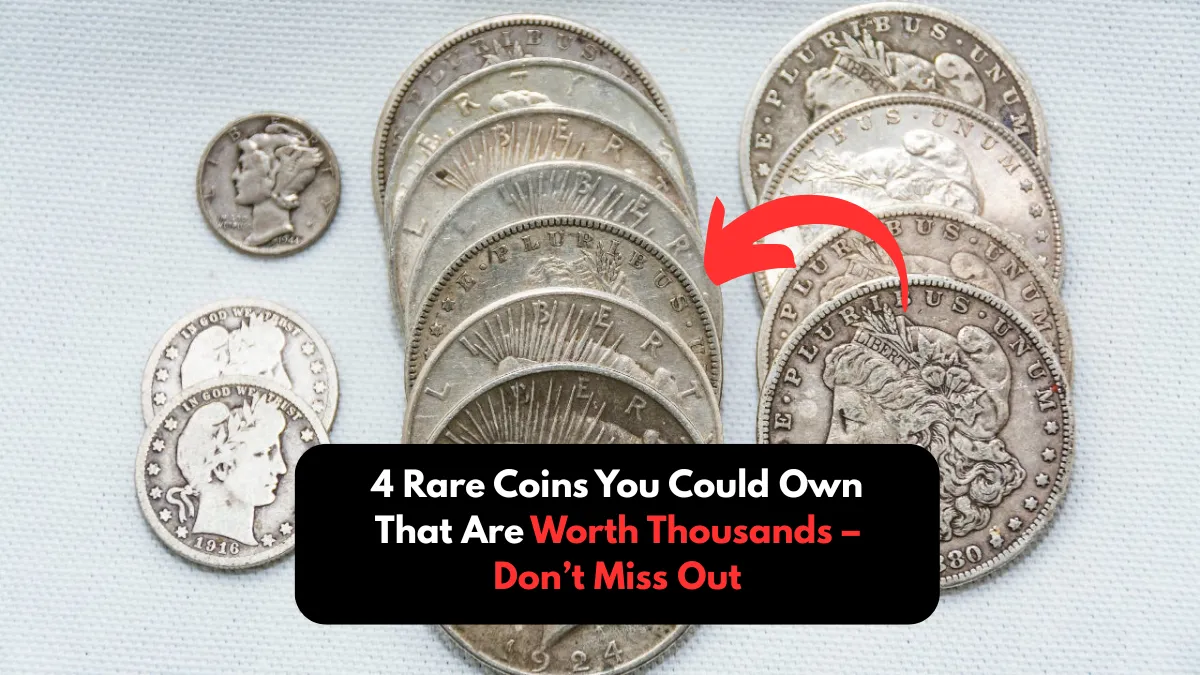Most of us don’t pay much attention to the change in our wallets or coin jars. But what if one of those ordinary-looking coins was actually worth thousands of dollars? It’s true—some rare coins are still floating around today, and you could have one without even knowing it. Here are four valuable coins to watch for that might turn your spare change into serious cash.
1. 1943 Copper Lincoln Wheat Penny – Worth Over $100,000
Most pennies made in 1943 were composed of steel because copper was needed for World War II equipment. However, a small number were mistakenly struck using leftover copper planchets. These rare copper versions are now among the most valuable U.S. coins ever minted.
If you find a 1943 penny that’s brown or copper-colored instead of the usual silver-gray steel, you might have something extraordinary. A quick way to check is with a magnet—steel pennies will cling to it, but copper ones won’t. This coin is incredibly rare, with only 20 to 40 believed to exist. Because of their rarity, these pennies have sold for well over $100,000 at auctions. It’s a reminder that even the tiniest coin could be worth a fortune if you know what to look for.
2. 1955 Doubled Die Penny – Worth Up to $15,000
One of the most popular error coins ever discovered is the 1955 Doubled Die Penny. This coin is easy to identify because the words on the front, especially “LIBERTY” and “IN GOD WE TRUST,” appear to be printed twice. This visual doubling occurred due to a misalignment in the die used to stamp the coin.
Collectors prize this coin because the doubling can be seen without magnification, making it both distinctive and desirable. Depending on the coin’s condition and how pronounced the doubling appears, it can sell for anywhere from $1,000 to $15,000. If you come across a 1955 penny in your change, it’s worth a close look—you might just be holding one of the most famous U.S. coin errors in history.
3. 2004 Wisconsin Extra Leaf Quarter – Worth Up to $6,000
The 2004 Wisconsin state quarter is known for a unique mint error that makes it highly collectible. On the back of the coin, where a corn stalk is shown, some versions have an extra leaf—either pointing high or low—near the ear of corn. These variations are not part of the original design and were likely created by accidental contact with a damaged die.
If you have a 2004 Wisconsin quarter, closely examine the corn stalk on the reverse. You’ll want to check for any extra leaf that wasn’t meant to be there. These “Extra Leaf High” and “Extra Leaf Low” coins have caught the attention of collectors, with some examples selling for as much as $3,000 to $6,000. It’s a great reason to take a second look at state quarters that might otherwise seem ordinary.
4. 1982 No Mint Mark Roosevelt Dime – Worth Up to $2,000
Normally, coins have a mint mark indicating where they were produced, such as a “D” for Denver or an “S” for San Francisco. But in 1982, some Roosevelt dimes were mistakenly released from the Philadelphia Mint without any mint mark at all. These dimes are now rare and sought after by collectors.
To spot one, look just below the year on the front of the dime. If there’s no letter at all, it might be one of these rare error coins. Because the mint quickly corrected the mistake, only a small number of these dimes were released into circulation. In excellent condition, these can sell for up to $2,000. Keep an eye out for them—they often go unnoticed because they look so similar to regular dimes.
Final Tip: Always Check Your Change
These stories show that high-value coins can still be found in everyday pockets and coin jars. Taking just a few moments to examine the coins you come across might reward you with a valuable discovery. Focus on the dates, mint marks, and small design details—they can make a big difference.
The next time you’re about to toss your change into a jar, remember that one of those coins might secretly be worth hundreds or even thousands of dollars.
John M. Moody is a passionate writer known for his insightful and engaging storytelling. With a background in astrology and a love for exploring the human experience, John weaves cosmic wisdom into compelling narratives that inspire and enlighten. His work spans articles, essays, and spiritual guides, often blending mystical themes with real-life reflections. When he's not writing, John enjoys stargazing, reading mythology, and connecting with nature for creative inspiration.
